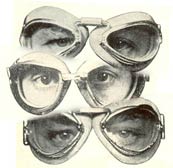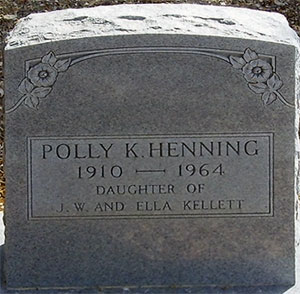|
A Full Life in Aviation:
A Lesson in Being in
The Right Place at the Right Time
Harold P. Henning was born September 30, 1901 at Indianapolis,
IN (N.B. his WWI draft card, below, gives his year of birth as 1899). The 1900 U.S. Census placed his parents (both aged 23) living in Indianapolis with his grandfather, Henry and uncle Oscar. His father's occupation was listed as "Clerk" for a "R.R."
The 1910 Census, Henning's first, placed him living at age 8 with his parents as boarders in a home in Memphis, TN. His father's occupation was listed as "Agent" for a "Council."
Henning's signature in the Register clearly matches that on his draft card, below. Compare for yourself by downloading Register page 146 at the link. He's about 2/3 down the page. In 1918, he was fresh out of school and was a draftsman for the E.C. Raney Company in Columbus, OH. According to The Billboard magazine, June 14, 1947, the Company, later to be renamed Ranco, was the world's largest maker of thermostatic controls for refrigerators.
H.P. Henning, WWI Draft Card, September 12, 1918 (Source: ancestry.com)
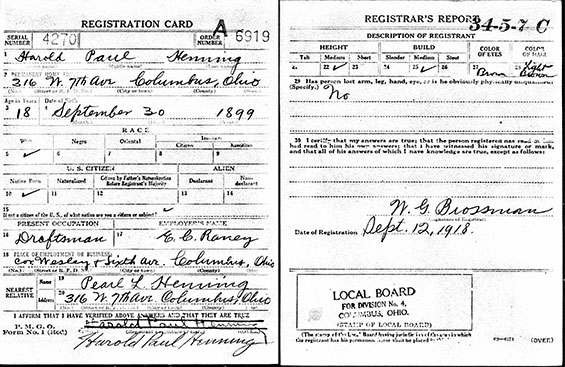 |
Henning had attended the Columbus Trade School 1914-1917
and graduated before going to work for Raney. It does not appear that he was drafted or served during WWI. The 1920 Census cited his residence as Columbus, OH living with his widowed mother, Pearl L. (43). She listed her occupation as a "Saleslady" for a "Millinery." His occupation was still as a draftsman. He would soon move out west.
El Paso Herald (TX), September 15, 1925 (Source: newspapers.com)
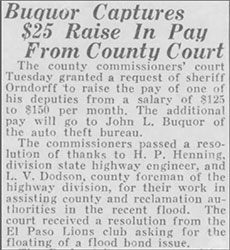 |
He began flying as an avocation in 1922
at Santa Fe, NM while engaged as a civil engineer in highway
maintenance and construction. A story in the El Paso Herald (TX) for September 4, 1925 described his work with a bridge maintenance project after Rio Grande River flooding. The Herald of September 15th cited an award for his work, right.
Henning worked on the highway job
through 1925. His subsequent history illustrates brightly that he was
bitten by the flying bug, and complemented his aviation passion
with his engineering skills. In the long view of his
career, he tended to alternate between bouts of entrepreneurial
energy and working for established companies. Examples
follow.
From 1925-1926 he barnstormed through the southwest United
States. From 1926-1927 he combined his flying and civil
engineering when he was engaged in aerial and ground mapping
for a reclamation project in Texas. He went out on his own from 1927-1929 and organized and
operated an aerial mapping and engineering service company,
selling services to oil producing and pipeline companies,
transmission line, highway and taxation projects. He
purchased and rebuilt Liberty-engined DH airplanes for this
work. He sold his business to Edgar Tobin Aerial Surveys,
Inc. It’s
odd that this link makes no mention of Henning.
El Paso Evening Post (TX), October 21, 1930 (Source: newspapers.com)
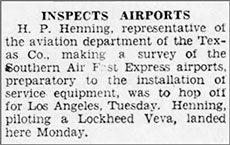 |
From 1929 to 1935, Henning was employed in the aviation
department of the Texas Company, Houston, TX, where he assisted
in the development and flight testing of aviation petroleum
products. He piloted various types of aircraft throughout
the United States, Mexico and Canada, establishing distribution
logistics for aviation petroleum products. He contacted
airline, manufacturing and operating companies in a sales
and advisory capacity. At left, from the El Paso Evening Post (TX), is an article that describes an inspection tour of airfields. The Lockheed Vega cited was probably the one he brought through Tucson, and his itinerary through Tucson was probably part of the inspection tour.
Brooklyn Daily Eagle, December 18, 1930 (Source: newspapers.com)
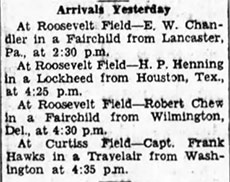 |
It is during his tenure with the Texas Company and that inspection tour that Henning
landed at Tucson on October 22, 1930 at 11:04AM. Based at Houston, TX, he was
solo in Lockheed Vega NC7162, westbound from El Paso, TX. There
is no tangible record in the Register of his destination or the purpose of this flight,
but it was probably in support of his sales and advisory
duties with the Company as described in the article above. Other news articles cited Henning's activities in the southwest during his tenure with the Texas Company.
And the southwest was not the only area he visited on behalf of his company. The Brooklyn Daily Eagle (NY), December 18, 1930, reported his landing at Roosevelt Field in New York a couple of months after his visit at Tucson, right.
| TEXAS Booth-Henning, Inc., has opened a plant at Love Field, Dallas' municipal airport. The company is directed by Edward F. Booth, who has operated at Love Field for six years, and Harold P. Henning, who was formerly with the Texas Company. Equipment has been installed at a cost of $25,000. |
In 1935, until 1939, Henning established, and operated as
general manager, the Booth-Henning Company at Dallas, TX. Aviation magazine for March, 1936 reported the company formation, left. He
built and equipped a complete aircraft and engine overhaul
base which, at the time, was the only such base where aircraft
of all kinds could receive a major overhaul or rebuilding. Booth-Henning
had CAA-approved airframe, engine, propeller, instrument,
accessory and radio shops. It had service contracts
with all principal engine, propeller and accessory firms. The
company worked on many types of aircraft, including
Douglas DC-2s, Lockheed 10s and 12s, Ford Trimotors and most
of the types of single engine airplanes. Booth-Henning
had distribution contracts for Stinson, Ryan and Aeronca
aircraft in the southwest. In 1939 he sold his interest
in the business to investment bankers.
The 1940 Census listed Henning, age 39, living in Dallas, TX with his wife, Polly (29) and infant son, Harold, Jr. (2-months). They had a live-in nurse with them named Belva Powers (27). They rented their home for $45 per month. Henning's salary was coded as $3,600 and his occupation as "Traveling Salesman" for a "Wholesale Aircraft Company" (which was Stinson at the time). An obscure Web reference stated that Henning married Francis Pauline Kellett (b. September 19, 1910). She could be "Polly." I don't know a date for their marriage. With WWII approaching, his job was in flux.
Between 1939 and 1941 Henning was employed by the Stinson
Aircraft Company as Division Sales Manager and later as Assistant
Sales Manager. As of July 1941 he was employed by the
Ford Motor Company (on the recommendation of Register pilot J.H. Doolittle). He
was advisor to the architects, and supervised the layout
and construction, of the Willow Run Airport and all installations
such as hangars, gun firing pits, compass compensating turntable,
built-in weighing scales and decompression and cold chambers.
As WWII heated up, he organized the flight operations at
Willow Run, which had full responsibility for all work and
testing on the B-24 airplanes after they left the Willow
Run assembly line. To
do this work, he employed a nucleus of experienced pilots,
flight engineers and mechanics from among many of his acquaintances
in the aviation industry. The Dearborn city directories for 1943 and 1946 corroborated his work with Ford, as did the Washington Court House Record-Herald (OH), April 2, 1942.
After his familiarization with existing production test
procedures and check-out for the B-24s at Consolidated Aircraft,
Henning personally qualified the personnel at Willow Run
who were responsible for Willow Run production tests. He
personally flew the first production B-24s at Willow Run
and worked with the Army Board for their acceptance.
At Willow Run, he established the flight research program
for high-altitude tests on the R-2800 engine ignition system. He
flew some of the P-47 altitude checks, and other checks on
the B-26. He assisted in the development of Military
Necessity changes in B-24s, and worked with the Army at Wright
and Eglin Fields for approval of such changes. He
acted as liaison on technical details between assembly plants
at Tulsa, OK and Fort Worth, TX and Willow Run. He
also participated in extreme altitude tests in the decompression
and cold chambers (this when he was in his 40s).
Harold Henning held CAA airman’s certificate 1415
with Commercial Pilot, Airplane, Single and Multi-Engine,
Land and Sea, 80-3,600 HP, Flight Instructor, Instrument
ratings, as well as FCC third-class radio-telephone certification. He
flew as Captain on most types of commercial aircraft of the
time, as well as the military B-26, B-25, B-24, B-17, C-78,
C-87, PB-4Y, PB-5Y, P-47, G-21 and AT-6.
As of July 13, 1944 he had logged 6,999 hours and 5 minutes
flight time since certification, and about 200 flight hours
before he acquired his license (pilot licenses weren’t
required in the U.S. until 1926). According to a site visitor, we know that, after WWII, Henning went on to establish and lead the corporate flight department of the General Motors Corporation (GMC). The 1948 city directory for Dearborn, MI lists him as a pilot for GMC.
An immigration form from May 2, 1949, below, documents a flight Henning made as pilot in command of a Grumman Mallard, NC2996, between Acapulco, Mexico and Brownsville, TX. He carried a co-pilot and at least three passengers on what was probably an executive junket.
U.S. Immigrations Form, May 2, 1949 (Source: ancestry.com)
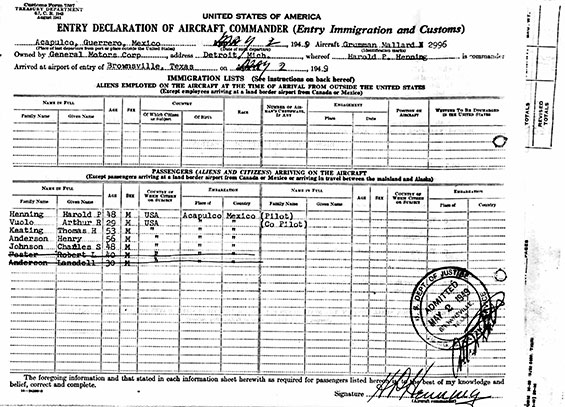 |
Incidentally, passenger Keating was the first general manager of Chevrolet who made his way up through the ranks from the sales department, having joined GM in 1916 as a distribution clerk in Tarrytown, N.Y. During his long association with General Motors, Keating played a key role in introducing the Corvette and the Chevrolet V-8 engine. He died in 1983 at age 88.
An online blog stated the following, "9.12.1958 - Harold P. Henning, Manager of Engineering Operations and Inspection for General Motors, dies at age 57." Polly met a tragic end a few years later on November 19, 1964 as documented in her death certificate, below. She was found dead at 7:15PM on highway 281 in San Antonio, TX. The certificate was signed by her son, Harold, Jr. Her grave marker in Pendergrass Cemetery in Sidney, TX is at right. Harold, Jr. was an officer in the Air Force. Brief biographical information is at the link.
Polly Henning, Death Certificate, November 19, 1964 (Source: ancestry.com)
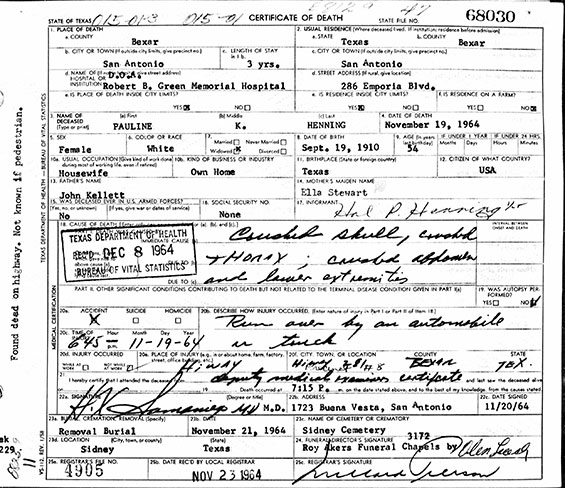 |
I have no further information
about Henning. He has a very sparse Web presence, with a few of the hits being this Web page and the one for his Lockheed. He has a very sparse presence in subscription newspaper services (see above). I have no images of pilot Henning. If
you can help with additional information, photographs or corroboration, please let me KNOW.
Dossier 2.1.99
THIS PAGE UPLOADED: 05/17/07 REVISED: 10/27/17, 11/11/16
|

